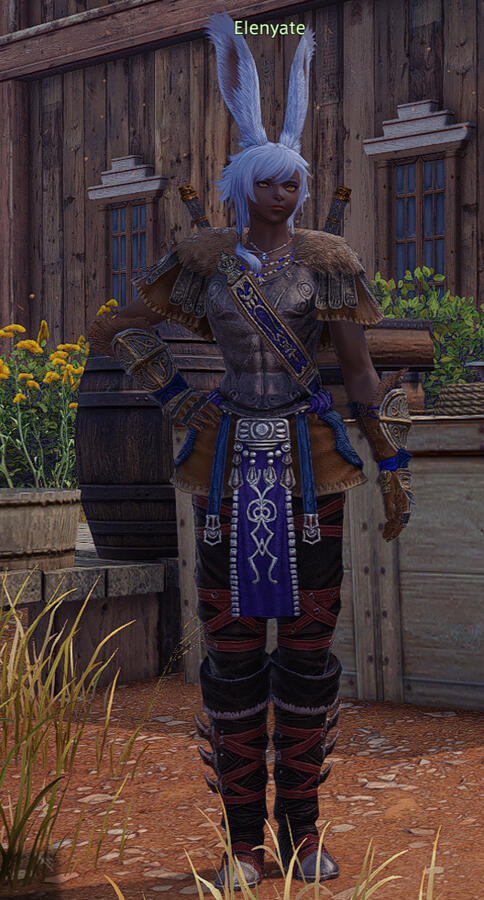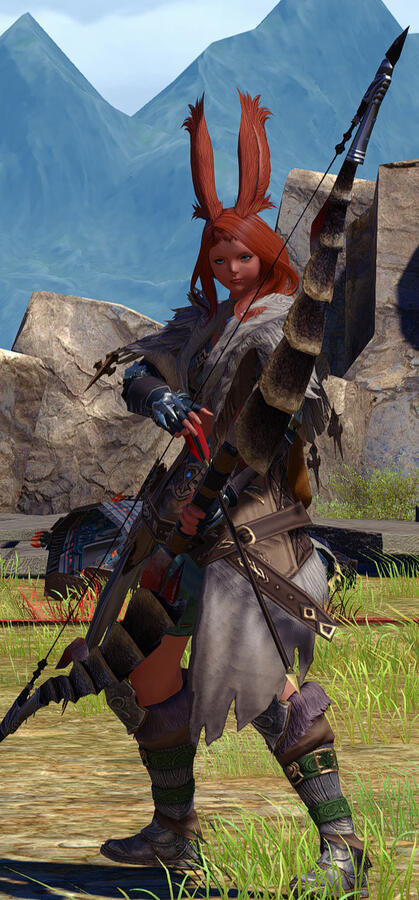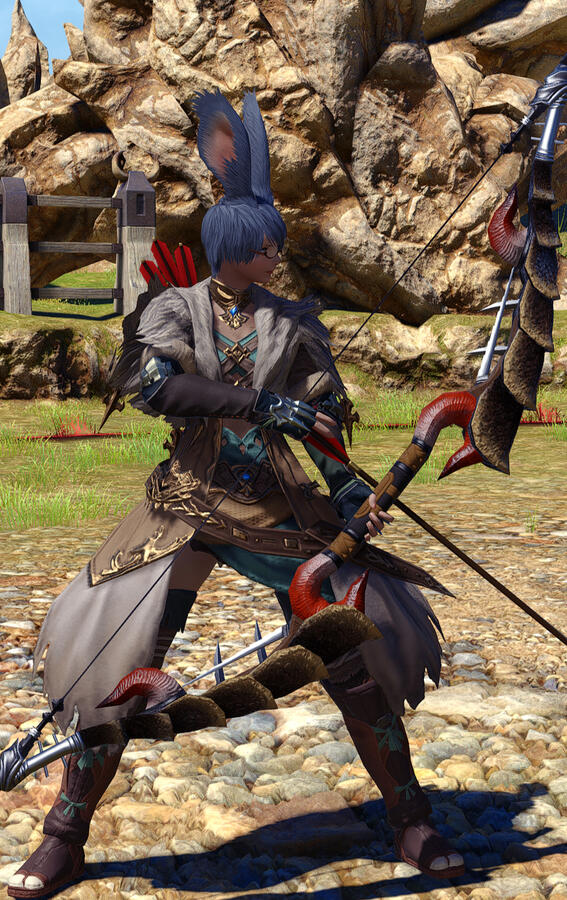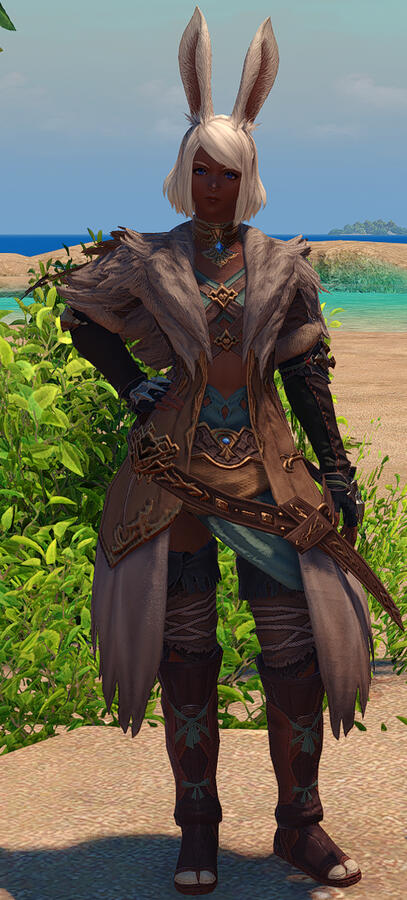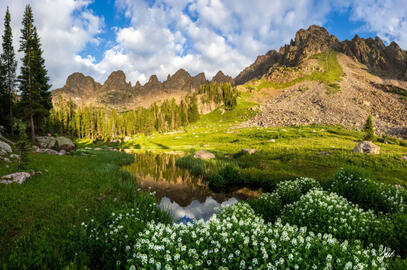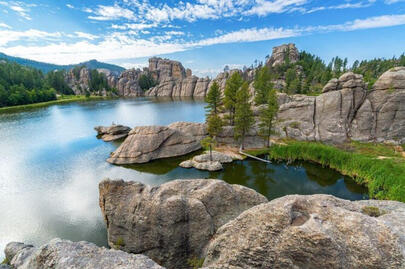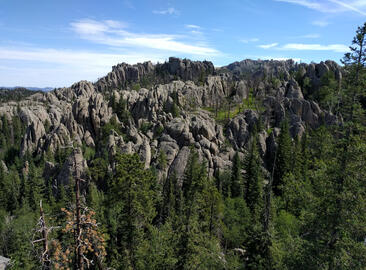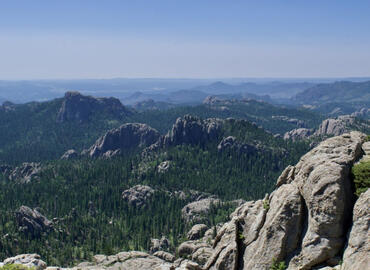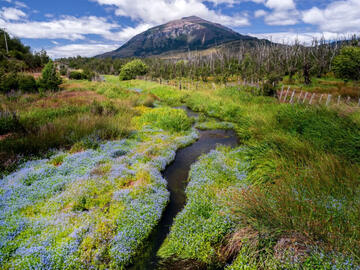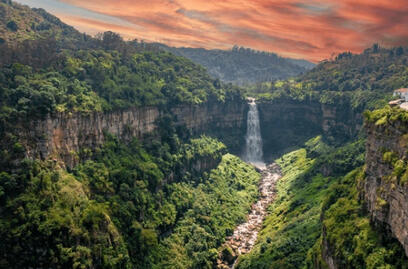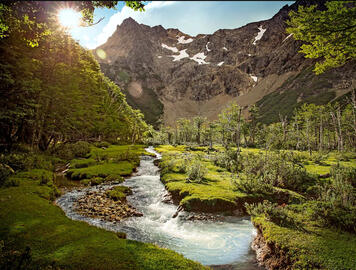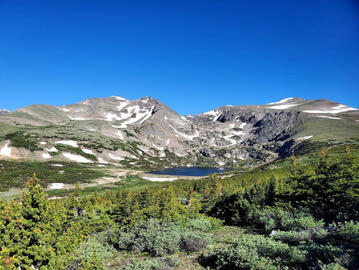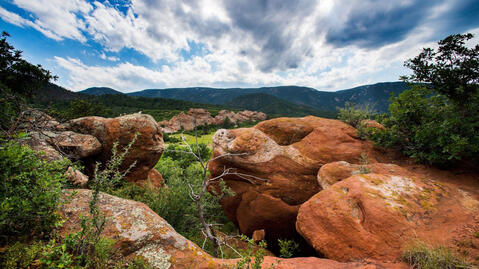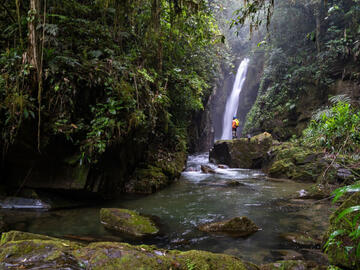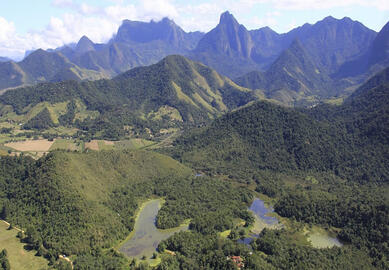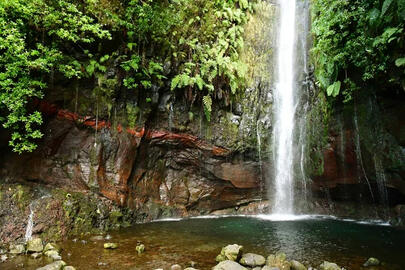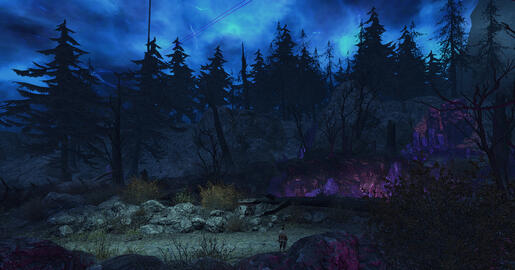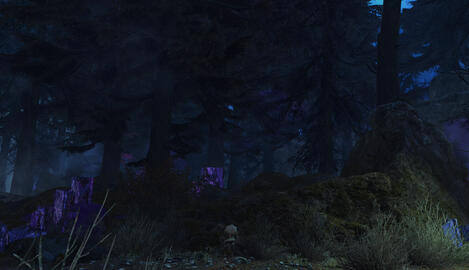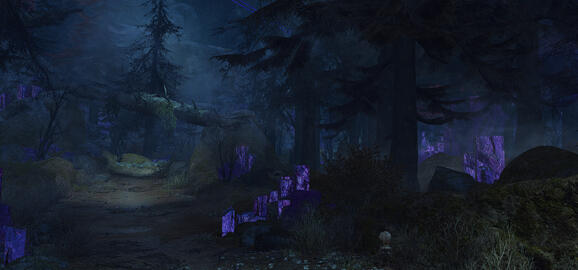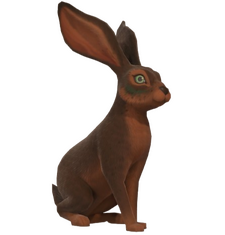
The Shetona of Tural
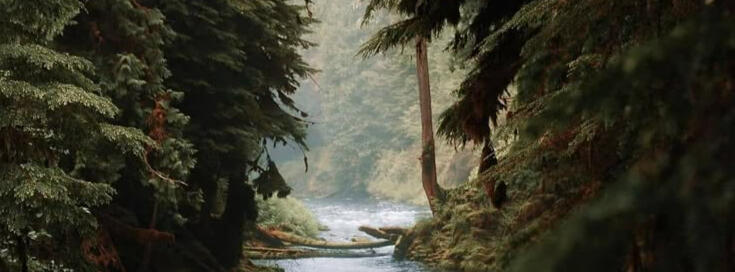
Culture & Life
Family & Community
Villages are typically small collections of Shetona and their families, 'built' and maintained by their women.
Families are built upon the bonds between mothers and children. When a child is born, the parents are inextricably bound together as well.
Mothers live with their children until they become independent. From her, they learn all the skills and knowledge they need to flourish.
As the seasons turn, the men visit each family they may have in each village they pass through. They talk until the small hours of the morning, sharing all that has happened since last they met. They also share how each other village they visited fares, making small settlements much more deeply connected despite the distance between them.
There is no ideals or expectations in Shetona communities other than that which one puts on themself, or the desires they may seek to fulfill. If one person cannot hunt for example, they are not seen as less than for it. They are still considered loved and valuable as part of the village or community.
Even with perceived failings, those who leave are always welcomed upon returning home.
Despite some differences, Shetona, as Viera, value family above all else.
HISTORY
Prior to Gulool Ja Ja's joining of factions across Tural, Shetona and Tonawawta were once considered to be sworn enemies.
After newfound peace, they began to share the land as they do today.
Nowadays, it's common for Shetona to live in close community with other races.
Relationships & Etiquettes
Shetona have no concept of a strict social hierarchy.
Men are not beholden to their elder's judgements and do not hold them in greater or lesser standing than themselves, nor are they seen as lesser or greater to women, despite being historically fewer in number.
Consensual polyamory is common, considered to be the social norm among Shetona. Men and women alike may have multiple partners through their life or at the same time.
As such, it is common for children to have siblings by different mothers, or different fathers.
It does not seem uncommon or strange for some to be non-polyamorous or otherwise.
Environment & Residences
Villages may be fairly sized or exceptionally small and isolated. It is possible for some to have homes enough to count on one hand, and have mountains- or several- between them.
It isn't uncommon for Shetona who are from further out villages or regions to be unfamiliar with the sea. Some villages reside near lakes in which families will swim, in the forests, or in the reaches of Yyasulani properly where it is more arid among the mountains and lake.
There is no one place that Shetona point to as a collective home, but rather they are interconnected across all of Tural.
Homes and villages themselves are most commonly not erected by Shetona themselves, if at least not entirely. In order to preserve the environment and nature around where they choose to settle with an importance to keep things as they are, instead often they will take the abandoned residences of peoples past.
Otherwise, trees are felled only as necessary, or homes may be made of overhangs and caves in the region.
Forests, and presumably other regions, may also be home to beasts dangerous enough to pose threat to hunters and non-hunters alike.
It likewise isn't uncommon for Shetona to live in other towns or cities, such as Tulliyollal. Many consider change and travel to be natural in nature's current as well. Regardless, these Shetona are not looked at any differently.
However, more often than not many may find themselves feeling an unbearable sense of suffocation being inside cramped buildings. The sense of claustrophobia is not an uncommon experience.
Some villages may rely on the aid of the sealed power of a tural vidraal to protect their village and people from natural predators they share the land with.
Xak Turali winters are not uncommonly harsh or cold, particularly in historically Shetona-inhabited land.
Medicine & Practices
Nopalitender stalks are often crushed and used to help children weaning.
Attire
Necklaces or chokers may be kept as heirlooms.
Though we may only see few Shetona from their own villages, typical garb and fashion tends to be practical, and covered. Boots are common in Xak Tural, forests and mountains. Fur accents and lining may help the cold, while openness helps reduce heat.
Jewelry, particularly chokers or short necklaces, can be accessories that do not get in the way of work, trade, or hunting. Often, they appear made of gold.
It's just as common for Shetona to wear other Turali garb; whatever the individual finds most comfortable for their living, region, or climate.
As Xak Turali winters are often cold, it's necessary to keep warm.
Warg set tops / scouting gloves, Sohm Al bows, Paglthan / Riversbreath leggings and boots / fending-maiming top, Ivalician samurai’s boots.

Language
Despite having their own historical language, not all Shetona, or perhaps younger Shetona, may not be fluent or familiar with the whole language.
Spiritual leaders of a community are typically familiar or fluent with the language in entirety.
Phonetics
Shetona is a phonetic language, consisting of vowel-heavy syllables and primarily hard consonants. Sounding out words is consistent for those that speak Common primarily.
Notably, there are letters and sounds absent from Shetona.
[ b, d, f, g, j, m, q, r, v, w, x, z ] are all absent.Names consist of 2-5 syllables; some can be of natural elements such as animals.
Apyaahi
Cahcuia
Ecaate
Elenyate
I'toca
Iyaate
Kuiyki
Nahueni
Oshce
Yyopya
Yyopyicana
Toashiua
Taapu
Naahe
Shunye
Elene'shpya
Yyupye
Shaloaci
Shashepya
Taapu
Uah'shepya
Ui’she
Uapyota
Uaauashe
Oshce
Yyopya
Translations
Across Xak Tural, despite sharing many of the lands with Hhetsarro and Tonawawta, much of the lands and animals are named Shetona words. They also, however, will use the Hhetsarro or otherwise words for landmarks or creatures that they did not name and have become commonplace, like the Niikwerepi river, or Rroneek, both Hhetsarro words.
Shaaloani
Where the Sun Guides
-
Yyasulani
Where the Clouds Dry
-
Tesh’pyani
Where the Stones Howl
-
Yehehetoaua’pyo
'Wing' 'Blue' 'Extinction'
-
Yeheheceyaa
Pterodactyl
-
Lunyuhiyshahe
Triceratops
Lunyacaua’pya
Tyrannosaur
-
Cauahealoa
Werewolf / Wolf-man
-
Cauahepya
Wolf
-
Yyenisheyni
Bat
-
Elene’shpya
Mallard Duck
-
Heshuala
Child of Thunder
Shshuye
Leaping Sun / Rabbit
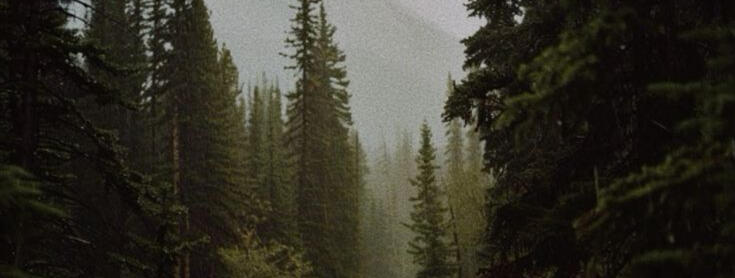
Beliefs
On Life & Living
The Shetona have a strong belief that all things "breathe the energy of life. The earth and the sea; the rivers and the forest; the rain, the wind, the sun. Every animal that walks, swims, or flies is beholden to this energy."
By attuning one's self to the flow of this life in everything, in the sense of allowing to connect with it, one thus becomes a part of every living thing under the heavens.
Being a part of this grand interconnection of life is the foundation of Shetona belief, where the concept of connection to all things is sacred.
All Shetona are, by nature of their own belief in it, connected to all natural things and each other. This isn't exclusive to those who live in nature or isolated-- those that live in cities even as grand as Tulliyollal are just as connected as their counterparts more rural.
There is no one place that Shetona point to exclusively to call home, many spread vast across Tural. It is their belief no matter the distance, they are all connected together by the roots of a great tree.
Though they live in complete harmony with nature, they do not condemn the ways of those who live in cities or apart from it.
Traveling the land can be one way for a Shetona to connect, or reconnect, to the life in all of the world around them.
Practices & Customs
To help bring themselves closer to that connection of all things, it is common for Shetona across Tural to use sprigs of Saca Sage native to the Shaaloani wilderness-- purported to be linked to the greater power flowing around all-- and waters from rivers, particularly the Niikwerepi river that runs through Xak Tural-- for the belief that such waters that have passed through countless valleys and under vast reaches of sky helps connect one to that unfathomable journey.
Both are used to cleanse one's self and home, for both literal cleansing properties and spiritual cleansing.
At least one group of Shetona has a shaman*, a community figure that is well versed in the Shetona language and can translate things such as names and their meanings, hold their histories, stories, and practices to share and teach to their people.
*The word 'shaman' originates in eastern Europe. It is vastly not considered correct or respectful to use for North or South American Indigenous peoples. If it's used, it should not be in tandem with imagery (glams, or aesthetics) that are explicitly Native American in portrayal. Otherwise, 'healer' or 'speaker' are good broad synonyms, not relating only to medicine, considering the Shetona's base in Tural.
On Death & Afterlife
Death is largely viewed as something not to be over-mourned.
It is a part of the cycle of life, and thus part of the life that connects all things.
Being all connected by the roots of a great tree, Shetona believe that when one dies they return back to nature. Their spirit returns to the forests and lands above.
For hunters and protectors of villages against the natural fauna where they reside, returning to the lands above can mean hunting for eternity in connection with the life in all things.There, those that have passed look down on and watch out for the living.
Legends
Tales tell that the long ears of Shetona "harken to the earth" and hear it.
Shshuye, a type of jackrabbit native to Yyasulani, is held by the Shetona to be a distant past relative.

Citations
This carrd is an ever-growing piece, put together by an Indigenous American
all lore in this carrd comes from FFXIV.
HERE is the document containing npc dialogue.
The purpose of this carrd is to first and foremost help and inspire Shetona & Viera players alike, and dissuade pulling from speculation that could result in negative depictions of North American-- or otherwise-- Indigenous peoples.Everything other than NPC dialogue, such as language speculation and geographical speculation from here onwards, is for the purpose of appreciation and celebration of the real-life, very alive cultures SE pulled from.
NOT to be used as a reference or source material for Shetona beliefs.
Primarily, the information is vastly word-for-word of NPC dialogue. Everything else is summarization, quest implications and meanings, and item/hunt information.
Thanks for reading!
LANGUAGES || GEOGRAPHY || AVOIDING STEREOTYPES || CREDITS
Conlang Inspiration
The Shetona language is directly inspired by several real-life North & South American Indigenous languages.
To make a unique and loose conlang, or constructed fake language, SE removed letters and utilized specific sounds in repetition to make something new without appropriating words or names (or beliefs) of peoples that still exist and use them today.
Inspirations from Real language
Sounds we hear in Shetona are rare when it comes to North American Indigenous languages, at least any I'm familiar with. "shepya / shpya" 's sounds, the hard "c", heavy vowel and "y" use (yy, uaau, aa) are all things that Shetona has in excess.
Just as noticeable to me is what it doesn't have. My languages and all I'm personally familiar with have common use of "g / guh" sounds, "w" sounds, and "j". None appear even once in Shetona. Wild. For all our searching, I can't find a language that doesn't use "w" or "g" at all.
What we can find however, is some languages that have them less, and are similarly vowel heavy. In looking, it helped to try to narrow down geography if we're considering "North of Shaaloani", but even that only goes so far, there is a whole lot of north america.
However, we can still pinpoint several specific influences!
Most notably Diné, Myaamia, Dakȟóta, and Tupi-Guarani languages and their families.
Myaamiaataweenki, the language of the Myaamia (or Miami-Illinois) people in the Eastern Woodlands cultural region and the Great Lakes region of north america, have what I believe might be one of our 'best bets' phonetically.
For example:Ayaapia - Buck, Stag
Pyaakimišaahkwi - Persimmon tree
Keentaawhkicia - Pintail Duck
Aahsanteeki - It is sunny, the sun shines'Aah' in Aahsanteeki may also contribute to 'Shaa'loani.
Specifically Cahcuia is a Tupi-Gurarani location name. The language has multiple sounds and similar structure to some of what we see IG.
Apya - (From Apyaahi)
Kui - (from Kuiyki)
Notably the -te ending appears as well.
Regarding Dakȟóta so far is a single name:
Ecaate seems to be inspired by e'ćata, and it could be broken down fruther into Eca - ate as parts.
While 'Shaa' in Diné bizaad, or the Diné language, also means 'sun'.
Geography Inspiration
From the inspirations drawn for the Shetona language, and from the geographical parallels we can surmise with what we see and what we cannot in Tural, we can point to several different regions of North and South America. Given the size and breadth of Xak Tural, Tural as a whole, and what we hear in quests about Shetona not only coming from one place, we can pull inspiration for both what we can see and what we can't.
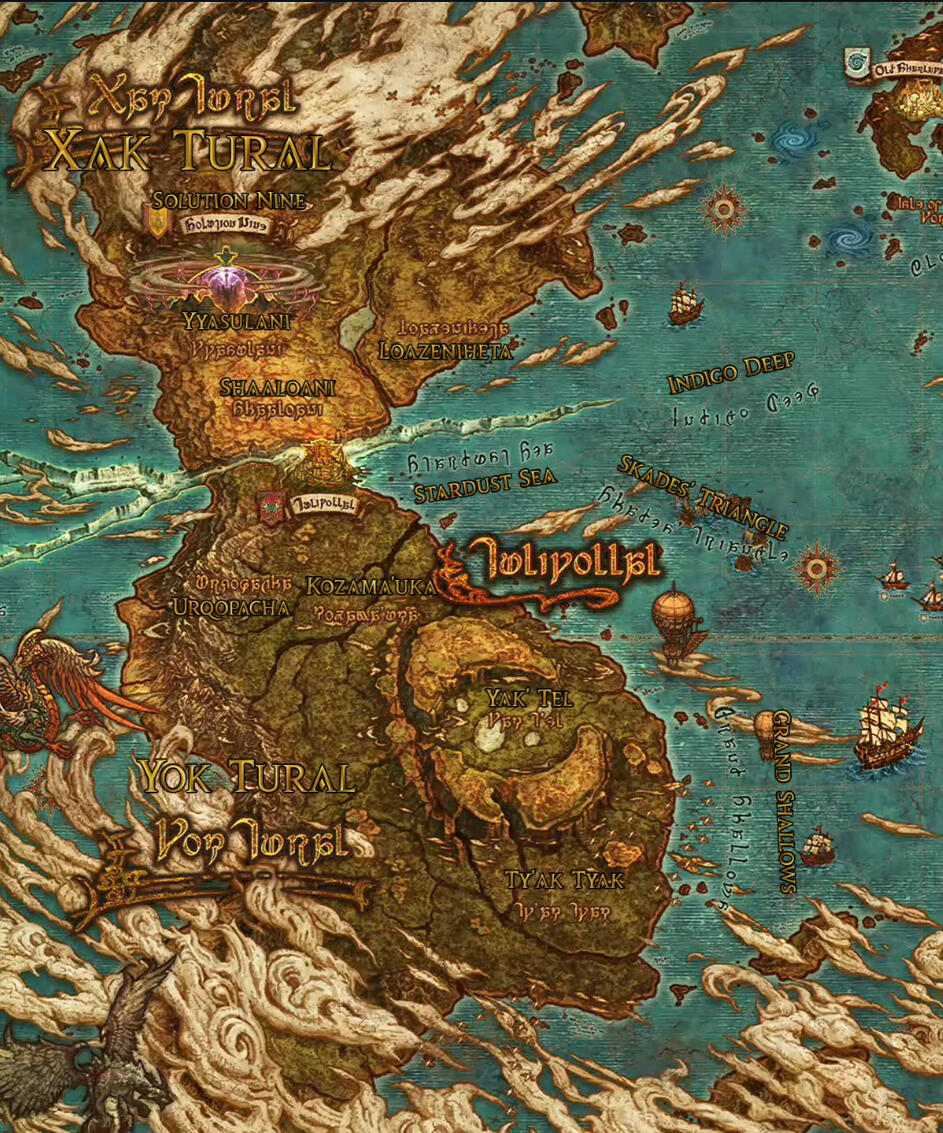
Pine Forest, Yuweyawata
In addition to this, we can look at the map above to compare the coloration and geography of Xak Tural to Yak Tural, as well as NPC dialogue implying that Yyasulani's plant life was more or less ruined by the levin if not the land itself, to speculate about the kind of environments we may have seen.
Shetona in several instances mention being people of the forest.
Interestingly enough, there's in-game places we can also pull inspiration from!
Given certain questlines confirming some direct connection between areas of the first and areas of Xak Tural akin to how Alexandria was able to be seen in vision there, as well as creatures we see seldom outside the First, we can take inspiration from the Rak'tika Greatwood and Amh Araeng in particular, though the rest of Norvrandt may serve as connection and inspiration.
Avoiding Stereotypes
Do your research! It's painfully clear who has and hasn't.
The Shetona and Viera both are inherently Indigenous-coded by Square Enix in a way very similar to Hhetsarro and Miqo'te. While people indigenous to their historic lands are not inherently only first-nations peoples of the Americas and can be found across the world over, given the nature of Tural's own inspiration, and fanon people have created surrounding Viera, here are some resources to be mindful of.Square Enix has done an okay job at being inspired, while not directly taking for their own in Dawntrail specifically. Do likewise!!Even if you have mind to make your own Village, or not base on anything,
these are all still applicable.
How to Write Indigenous Characters Without Looking like a Jackass,
Highlighting sections on: Representation: Stereotypes and Critical Thought, and Topics to Avoid if You Aren't Indigenous
Native American Relationships to Animals: Not Your "Spirit Animal",
A short teaching resource from the NMAI that highlights fact vs. fiction and what Indigenous people often ask non-Natives not to use.
How to Write Indigenous Peoples in Literature,
Concise and to-the-point, a good jumping-off point for anyone to start from.
On Writing Native American Characters in Fantasy/Sci-Fi,
What it says on the tin. Short piece with some Do's and Do Not's.
Sexualization of Indigenous women through cultural appropriation and media,
Insight on an overlooked and particularly important issue in depictions of Indigenous Women.
Do's and Don't's of Creating Authentic Native Representation,
A film guide primarily, but has a great list of stories that we are tired of hearing and aren't yours to write. Great things to avoid AND what to go after.
Two Spirits, One Heart, Five Genders,
A glance at LBGT+ (Two-Spirit) experience in pre-colonial Americas.
Rez Mage: Viera, Indigeniety, and Urban Natives,
A XIV Lore specific piece by a Dakota player.
Frankly, a mandatory read to me for any Viera players.
Native people are not a monolith that do, or should, all look and act one way.That also goes for their cultures, traditions, and practices.
Don't pan-Indian your inspiration if you're pulling from real life peoples.We are not less Native for being one way or another. We're people still here now!
Credits
The vast majority of this carrd was made and compiled by myself, Sunnyeel.
I'm an Eastern Woodlands Indigenous Two-Spirit person and professional traditional artist, and have always been a very big advocate for good media literacy, sensitivity, and representation in roleplay- especially FFXIV RP.My opinion is not the only you should hear. Listen to other Indigenous XIV players and do your research on where SE has gone wrong as well.
Thanks is due to the wonderful Einar Kisne, who did an abundance of research into the linguistics of Shetona and where it may have come from with me, a feat with a ton of love that I absolutely couldn't have done on my own.
As an ever growing work, please feel free to reach out for contribution, resources, or additions! Thank you for reading!
